Table of Contents
Every digital marketer, SEO enthusiast, content creator, and marketing agency knows that content is king. But what many overlook is the secret ingredient that transforms good content into great content—data-driven storytelling. This is where HubSpot content analytics comes into play, offering insights that can elevate your storytelling to new heights.
The Power of Data
Data is the backbone of effective content marketing. It’s surprising how often this valuable resource goes underutilized. When leveraged correctly, data provides insights that reveal what resonates with your audience and what doesn’t.
This allows you to make informed decisions, ultimately driving engagement and conversions like never before. By understanding your audience’s preferences and behaviors, you can tailor your content to meet their needs and interests more precisely.
HubSpot Analytics as Your Crystal Ball
Imagine having a crystal ball that tells you exactly what your audience wants. HubSpot’s content analytics tools serve this very purpose. They offer comprehensive insights into your content’s performance, helping you understand which pieces are driving traffic, engaging readers, and converting leads.
With this knowledge at your fingertips, you can refine your strategy to ensure your content consistently hits the mark. HubSpot Analytics empowers you to track key performance indicators and measure the success of your campaigns, allowing for continuous improvement.
Data-Driven Storytelling Defined
Data-driven storytelling is the art of using data to craft compelling narratives that resonate with your audience. It’s about more than just presenting facts and figures; it’s about weaving those insights into stories that inspire action.
You can uncover the elements that make your content successful and use them to create stories that captivate and convert. This approach not only helps in building a stronger connection with your audience but also enhances the overall effectiveness of your marketing efforts.
Mastering HubSpot Content Analytics
Understanding and optimizing your content performance is crucial for any marketing strategy. In the following sections, we will delve into the key aspects of mastering HubSpot Content Analytics. We will provide insights and tips to help you leverage this powerful tool to its fullest potential.
From setting up your analytics dashboard to interpreting data and implementing changes based on your findings, we will guide you through each step.
Key Reporting Metrics
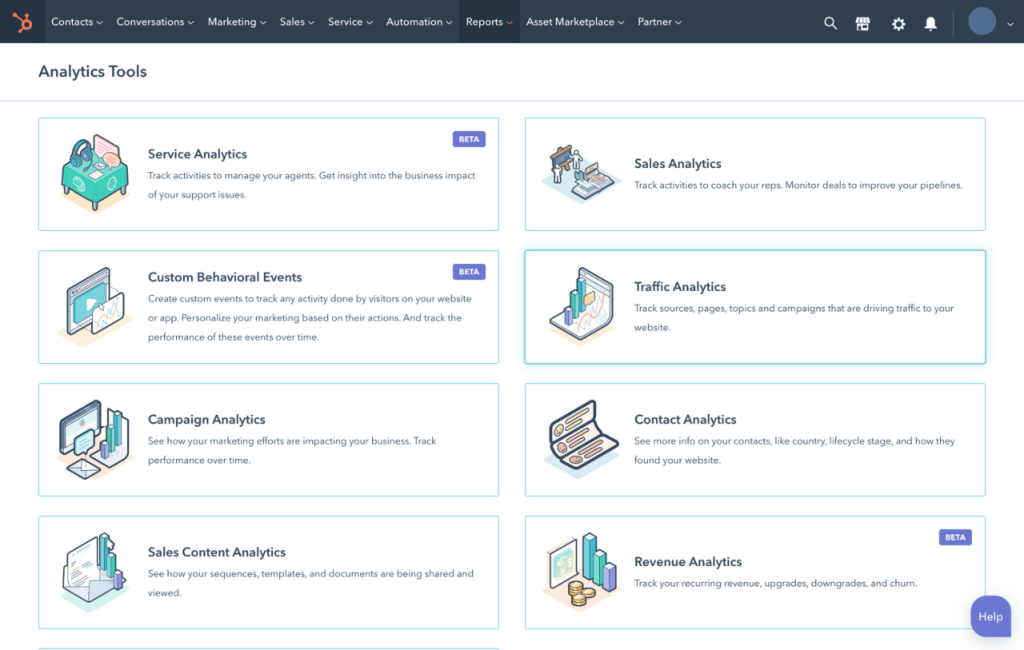
Website Traffic
One of the first metrics to consider is website traffic. HubSpot allows you to analyze traffic sources, page views, and bounce rates. By understanding where your visitors are coming from and which pages they’re visiting, you can identify what’s driving traffic and optimize accordingly. For instance, if a particular blog post is attracting countless visitors, it might be worth creating more content on that topic.
Content Engagement
Engagement metrics like time on page, scroll depth, and social shares provide insights into how your audience interacts with your content. HubSpot’s analytics tools can help you determine which pieces are keeping readers engaged and which ones are falling flat. High engagement rates indicate that your content is resonating with your audience, while low rates suggest areas for improvement.
Conversions
Ultimately, the success of your content marketing efforts hinges on conversions. HubSpot allows you to track leads generated, form submissions, and other desired actions. By analyzing these metrics, you can measure the ROI of your content and make data-driven decisions to boost conversions. For example, if a particular call-to-action (CTA) is driving many conversions, consider using similar CTAs in future content.
Setting Benchmarks and Goals
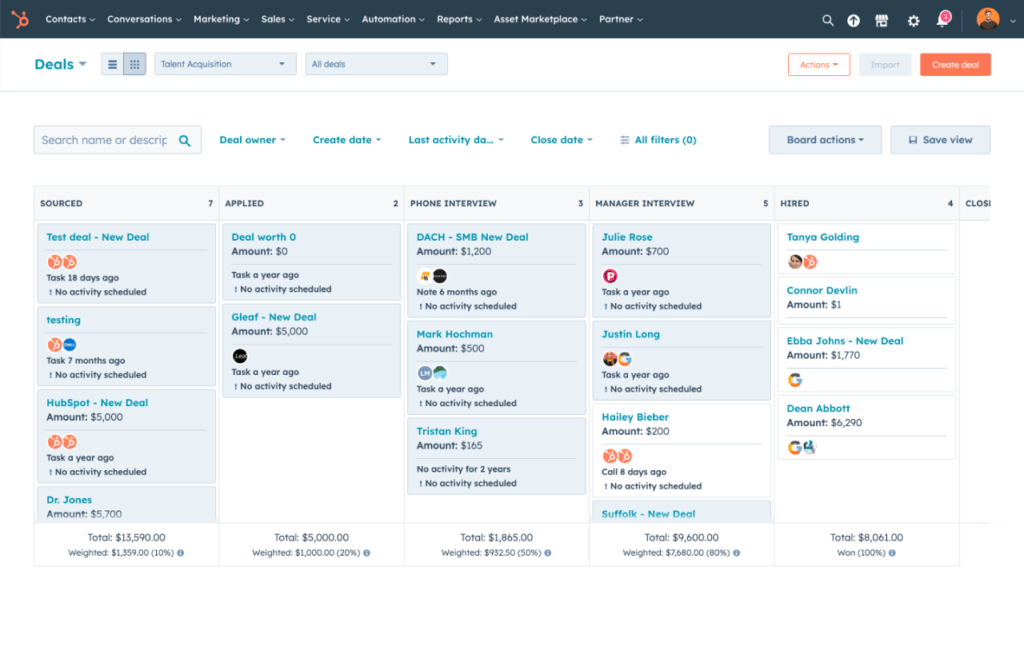
Industry Standards
To gauge the effectiveness of your content, it’s essential to compare your metrics against industry standards. HubSpot provides tools to research benchmarks for various metrics, allowing you to see where you stand. If your engagement rates are below industry averages, it might be time to reassess your content strategy.
SMART Goals
Setting SMART (Specific, Measurable, Achievable, Relevant, and Time-Bound) goals is crucial for guiding your content strategy. HubSpot enables you to track progress towards these goals, offering insights into what’s working and what’s not. For instance, if your goal is to increase website traffic by 20% in six months, HubSpot’s analytics can help you monitor progress and adjust your strategy as needed.
A/B Testing for Optimization

The Basics
A/B testing involves comparing two versions of a webpage or email to see which performs better. It’s a powerful tool for optimizing your content. By testing different headlines, images, and CTAs, you can determine what resonates best with your audience and refine your content accordingly.
HubSpot’s A/B Testing Tool
HubSpot makes A/B testing straightforward. You can easily test various elements of your content and analyze the results to identify the most effective strategies. For example, if an A/B test reveals that a particular headline drives more clicks, you can use similar headlines in future content to boost engagement.
From Data to Stories that Sell
Unlocking the potential of data to craft compelling narratives is crucial for effective marketing. In the following subsections, we’ll explore how to transform raw data into stories that captivate audiences and drive sales. From understanding your audience to leveraging data visualization tools, discover the strategies that turn numbers into narratives that sell.
Identifying Top-Performing Content
HubSpot analytics can help you identify your most successful blog posts, landing pages, and emails. By analyzing the performance of top-performing content, you can uncover the elements that make it successful. For instance, if a particular blog post has high engagement rates, you can replicate its style and structure in future content.
Understanding Your Audience
Understanding your audience is crucial for creating content that resonates. HubSpot provides demographic and behavior data, allowing you to create detailed buyer personas. By tailoring your content to these personas, you can ensure that it addresses their needs and interests, driving engagement and conversions.
Repurposing and Amplifying Content
Repurposing top-performing content into different formats or channels can extend its reach and impact. For example, you can transform a popular blog post into an infographic, video, or social media post. HubSpot’s analytics tools can help you identify which pieces are worth repurposing and which formats are likely to be most effective.
Creating Data-Driven Content Ideas
Using HubSpot analytics, you can identify gaps in your content and generate new ideas that resonate with your audience. For instance, if your data reveals that readers are interested in a particular topic that you haven’t covered yet, you can create content around that topic. By aligning your content with your audience’s interests, you can boost engagement and conversions.
Putting It All Together: A Data-Driven Storytelling Framework
- Analyze:
Regularly review your HubSpot reports to identify trends and patterns. This step involves diving into the data to uncover insights about your audience’s behavior, engagement levels, and content performance. By understanding what works and what doesn’t, you can make informed decisions to enhance your strategy.
- Strategize:
Use your findings from the analysis phase to adjust your content strategy and set new goals. This might mean focusing more on certain types of content, targeting different audience segments, or experimenting with new formats. Establish clear, measurable objectives that align with your overall business goals.
- Create:
Craft data-informed content that aligns with your audience’s interests and needs. This step is about translating your strategy into action by producing high-quality, relevant content. Whether it’s blog posts, videos, social media updates, or email campaigns, ensure that each piece of content is grounded in the insights you’ve gathered.
- Measure:
Track your results using HubSpot analytics to see what’s working. Monitoring the performance of your content is crucial to understanding its impact. Analyze key metrics such as engagement rates, conversion rates, and traffic sources to determine the effectiveness of your efforts and identify areas for improvement.
- Iterate:
Continuously improve your content based on the data you gather. The final step in the framework is about refinement and optimization. Use the insights from your measurement phase to tweak your content and strategy. This iterative process ensures that your storytelling remains relevant and effective, helping you achieve better results over time.
By following this data-driven storytelling framework, you can create content that not only resonates with your audience but also drives meaningful business outcomes.
Conclusion
To recap, using HubSpot content analytics for data-driven storytelling involves analyzing key metrics, setting benchmarks and goals, conducting A/B tests, identifying top-performing content, understanding your audience, repurposing content, and generating data-driven content ideas. By following these steps, you can create compelling stories that resonate with your audience and drive action.
Data-driven storytelling is the future of content marketing. By leveraging data to inform your content strategy, you can create more effective and engaging content that drives results. We encourage you to embrace this approach and explore the potential of HubSpot analytics to transform your content marketing efforts.
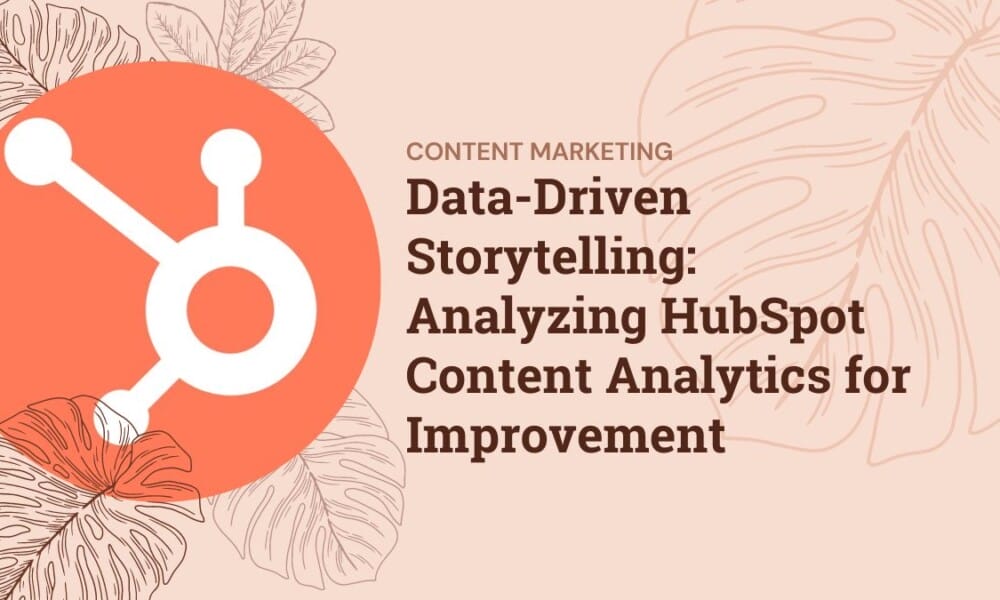


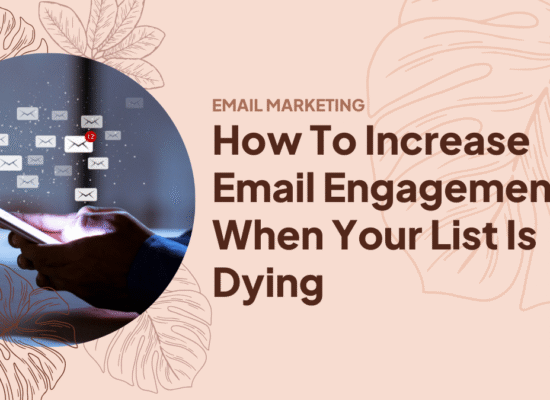
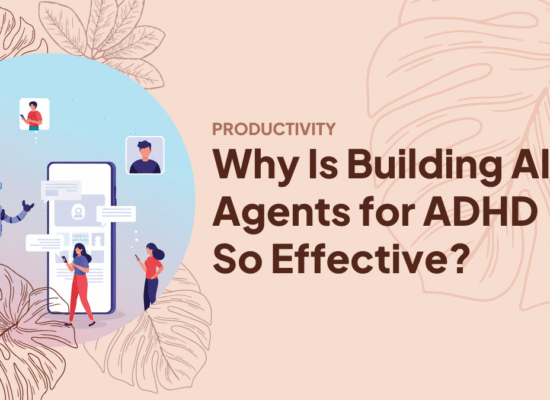
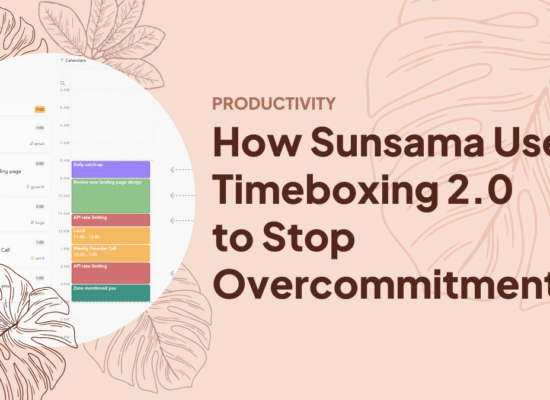
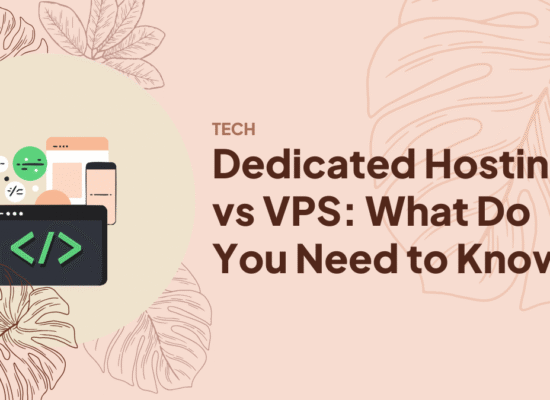
No Comment! Be the first one.